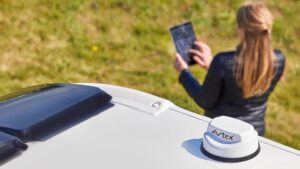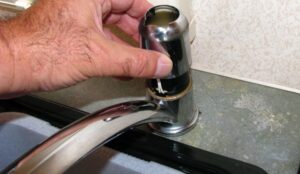Introduction
Importance of insulating a caravan wall:
Insulating caravan walls is a crucial step for anyone looking to maximize the comfort and efficiency of their mobile living space. Proper insulation not only ensures that the interior remains warm during colder months but also keeps it cool during the summer. For those with a static caravan, insulation becomes even more vital as these caravans are often situated in one place for extended periods, making them more susceptible to external weather conditions.
Benefits of insulation (thermal efficiency, noise reduction, etc.):
Insulating a static caravan offers multiple benefits. Thermal efficiency is the most evident advantage, ensuring that the caravan retains heat in the winter and remains cool in the summer, leading to reduced energy costs. Additionally, insulation acts as a sound barrier, minimizing external noise and creating a peaceful environment inside the caravan. This makes static caravan insulation not just a matter of comfort but also of cost-effectiveness and tranquility.
Types of Caravan Wall Insulation
Foam board insulation:
Foam board insulation is a popular choice when looking to insulate caravan walls. It’s lightweight, easy to install, and offers excellent thermal resistance. This type of insulation is ideal for static caravans as it provides a consistent temperature throughout, ensuring that every corner of the caravan remains comfortable.
Reflective foil insulation:
Reflective foil insulation is another effective method for insulating a static caravan. It works by reflecting radiant heat, making it especially useful in areas with high sunlight exposure. When used in conjunction with other insulation types, it can significantly enhance the caravan’s overall thermal efficiency.
Fiberglass insulation:
Fiberglass is a traditional insulation material known for its effectiveness in trapping air, thus providing excellent thermal insulation. When considering static caravan insulation, fiberglass is a reliable choice, though it requires careful handling due to its fibrous nature which can irritate the skin and lungs.
Spray foam insulation:
Spray foam insulation offers a comprehensive solution for those looking to insulate caravan walls. It expands upon application, filling gaps and crevices, ensuring airtight insulation. This makes it particularly suitable for older static caravans that might have cracks or gaps in their structure.
Natural insulators (like wool or cotton):
For those seeking eco-friendly options for insulating a static caravan, natural insulators like wool or cotton are ideal. These materials are sustainable, biodegradable, and offer good thermal insulation properties. They also provide the added benefit of being breathable, reducing the risk of condensation inside the caravan.
Tools and Materials Needed
Measuring tape:
Before you begin the process to insulate caravan walls, accurate measurements are essential. A measuring tape will help determine the amount of insulation material needed, ensuring that you neither fall short nor waste resources.
Insulation material of choice:
Depending on the type of insulation chosen (foam board, reflective foil, fiberglass, etc.), acquiring the right amount based on the caravan’s measurements is crucial. For static caravan insulation, it’s advisable to invest in high-quality materials to ensure longevity and maximum efficiency.
Preparation Steps
Cleaning and drying the walls:
Before insulating a static caravan, it’s vital to ensure that the walls are clean and dry. Any moisture or dirt can compromise the insulation’s effectiveness. Cleaning prevents mold growth, while drying ensures that the adhesive or fasteners bond correctly with the wall.
Removing any fixtures or fittings:
To insulate caravan walls effectively, any fixtures, fittings, or obstructions on the wall should be removed. This ensures a smooth surface for the insulation material to adhere to and prevents gaps or inconsistencies in the insulation layer.
Installation Process
Cutting the insulation to fit:
Once you’ve chosen your insulation material, it needs to be cut to fit the caravan’s walls precisely. Accurate cutting ensures that there are no gaps or overlaps, which can compromise the insulation’s effectiveness, especially in a static caravan where consistent temperature maintenance is crucial.
Applying adhesive or fasteners:
After cutting the insulation material to the desired size, it’s time to secure it to the caravan wall. Depending on the type of insulation and the caravan’s wall material, you might use adhesive, fasteners, or both. Ensuring a firm bond is crucial to prevent the insulation from sagging or coming off over time.
Vapor Barriers and Moisture Control
Importance of a vapor barrier:
When you insulate caravan walls, especially in a static caravan, it’s essential to consider moisture control. A vapor barrier plays a pivotal role in this aspect. It prevents moisture from seeping into the insulation, which can lead to mold growth, reduced insulation efficiency, and potential damage to the caravan’s interior. For static caravan insulation, where the structure might be exposed to varying weather conditions for extended periods, a vapor barrier is indispensable.
Types of vapor barriers:
There are several types of vapor barriers suitable for static caravan insulation. Common choices include polyethylene plastic sheets, foil-faced kraft paper, and bitumen-backed building paper. The choice depends on the insulation type, the caravan’s location, and the prevalent weather conditions. Each type has its advantages, but the primary goal remains the same: to prevent moisture infiltration and ensure the longevity of the insulation.
Insulating Windows and Doors
Importance of insulating these areas:
Windows and doors are often the weakest points in a caravan’s insulation system. They can be significant sources of heat loss or gain, making it crucial to insulate them effectively. For those focusing on insulating a static caravan, paying attention to these areas can make a considerable difference in maintaining a consistent internal temperature and reducing energy costs.
Methods and materials suitable for windows and doors:
There are various methods to insulate caravan windows and doors. Double glazing is a popular choice for windows, offering an air gap that provides excellent insulation. For doors, weatherstripping and draft excluders can prevent cold air ingress. Additionally, reflective foil or thermal curtains can be used for windows to reflect radiant heat, enhancing the static caravan insulation during sunny days.
Safety Precautions
Handling insulation materials safely:
When working to insulate caravan walls, safety should be a top priority. Some insulation materials, like fiberglass, can irritate the skin, eyes, and respiratory system. It’s essential to wear protective gear, such as gloves, safety glasses, and a mask, especially when handling such materials. This ensures that the process of insulating a static caravan remains hazard-free for the installer.
Ventilation during installation:
Proper ventilation is crucial during the insulation process. Some adhesives and insulation materials can release fumes that are harmful when inhaled. Especially in the confined space of a caravan, ensuring good airflow can protect against potential health risks. This is particularly important when working on static caravan insulation, where the structure might be more sealed off than a regular caravan.
Maintenance and Longevity
Checking for wear and tear:
Like all components of a caravan, insulation too requires periodic checks. Over time, insulation can degrade, sag, or even get damaged. For those who have invested in insulating a static caravan, regular inspections can help identify areas that need repair or replacement, ensuring that the insulation remains effective.
Replacing damaged insulation:
If wear and tear or damage is detected during inspections, it’s essential to address it promptly. Damaged insulation can compromise the caravan’s thermal efficiency, leading to increased energy costs. For static caravan insulation, where the structure is often stationary and exposed to the elements, timely replacements can prevent larger issues down the line.
Cost and Budgeting
Estimating the cost of materials:
Insulating a static caravan is an investment. Before embarking on the project, it’s crucial to estimate the cost of materials. Prices can vary based on the type of insulation chosen, the caravan’s size, and the region. By getting a clear picture of the expenses, one can budget effectively and ensure that the project doesn’t exceed financial constraints.
Labor costs (DIY vs. hiring a professional):
While many enthusiasts opt for a DIY approach to insulate caravan walls, hiring a professional might be a consideration for those unfamiliar with the process. Professionals can ensure a seamless installation, but they come with added labor costs. Weighing the benefits of DIY versus professional installation can help in making an informed decision based on budget and desired outcomes.
Conclusion
Insulating caravan walls, particularly in the context of a static caravan, is more than just a home improvement project; it’s an investment in comfort, efficiency, and longevity. As we’ve explored throughout this article, the benefits of static caravan insulation are manifold. From thermal efficiency, which ensures a consistent and comfortable internal temperature regardless of external conditions, to noise reduction, which offers a tranquil living environment, the advantages are clear.
Choosing the right insulation type, be it foam board, reflective foil, fiberglass, or natural insulators, is crucial. Each type offers its unique benefits, and the choice often depends on the specific needs of the caravan and its location. Moreover, the importance of moisture control through vapor barriers cannot be overstated, especially when aiming for long-lasting insulation.
Windows and doors, often overlooked, play a pivotal role in the overall insulation system of a caravan. Ensuring they are adequately insulated can make a significant difference in energy costs and comfort. Safety, too, is paramount. Whether you’re handling materials or ensuring proper ventilation during installation, taking precautions ensures the process is both effective and safe.
Lastly, while the upfront costs of insulating a static caravan might seem daunting, it’s essential to view it as a long-term investment. The savings in energy costs, coupled with the enhanced comfort and increased lifespan of the caravan, often justify the initial expenditure.
In conclusion, whether you’re a seasoned caravan enthusiast or someone new to the world of static caravans, understanding the intricacies of insulation is invaluable. Not only does it enhance the living experience, but it also ensures that your caravan remains a cozy haven, regardless of where it’s parked or the weather outside.



